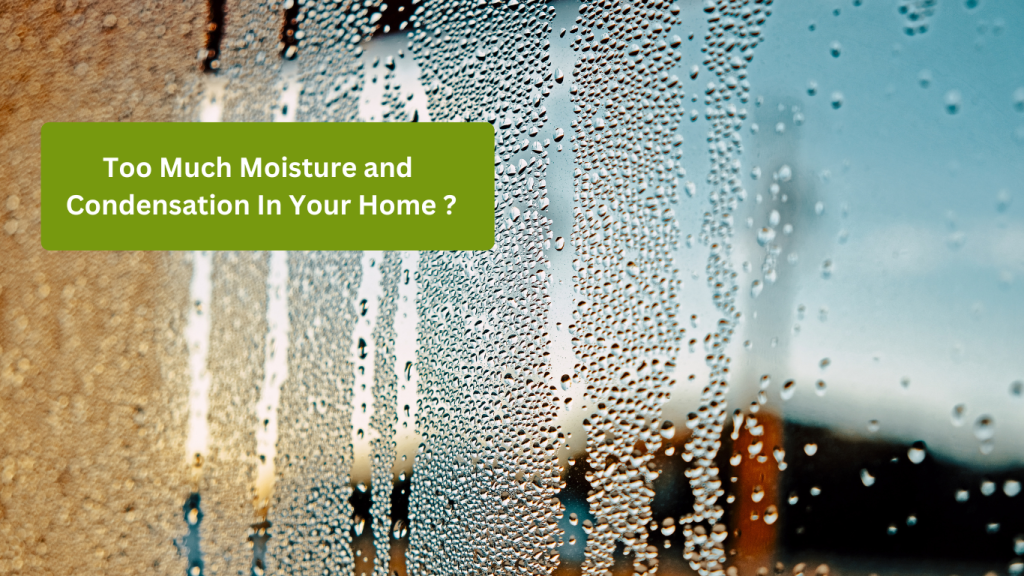
How to Reduce Moisture and Condensation In Your Home Throughout Winter
In the cold months moisture can build up around your home in Central Otago if your home is older and inadequately insulated and ventilated. Reducing moisture in your home is important for maintaining a healthy living environment, preventing mould growth, reducing running costs and avoiding structural damage. Musty smells, weeping windows, mouldy walls and ceilings and damp clothes are all signs you need to reduce moisture and increase ventilation and heating in your home.
There are many sources of moisture in the home which come from daily activities like showering, drying clothes and cooking. One of the main sources of dampness is moisture rising from the ground and evaporating through your floors. By reducing the impact from these activities you will start to gain a much healthier living environment for you and your family.
Here are some effective strategies for reducing moisture in your home:
Preventing Moisture Entry
- Seal Leaks: Inspect and seal any leaks in the roof, walls, windows, and doors to prevent rainwater from entering your home.
- Proper Drainage: Ensure that the ground around your home slopes away from the foundation to prevent water from pooling near the house.
- Plumbing Issues: Check for dampness under your house and fix any drainage, guttering, downpipe or plumbing problems as soon as they appear.
Ventilation
- Extractor Fans: Install and use exhaust fans (vented outside) in the kitchen, bathroom, and laundry room to remove moisture from cooking, showering, and washing clothes.
- Open Windows: Regularly open windows, especially in damp areas like bathrooms and laundries, to allow fresh air to circulate and help reduce indoor humidity.
- Closing Doors: to contain steam/condensation in wet areas.
- Clothes Dryers: Direct clothes dryer exhaust to the outside. A typical load holds 5 litres of water, which is released as water vapor and can result in thousands of litres of damp air.
- Install a Controlled Ventilation System: The optimal solution for home ventilation is mechanical ventilation with heat recovery (MVHR). These systems manage both the incoming and outgoing air in your home. They also recycle heat through a domestic heat exchanger, ensuring a constant supply of warm, fresh air while continuously expelling stale, cold air.
Insulation
- Proper Insulation: Ensure your home is well-insulated through the ceiling, floor and walls to prevent condensation on walls and ceilings.
- Install Double Glazed Windows: In 2023 in NZ, there were changes made to the building code significantly increasing the minimum insulation requirements. New homes are now required to install high-performance double-glazing units and thermally separated aluminum joinery.
- Check Existing Insulation: Insulation can degrade over time, generally it is advised that after 15 years it is worth getting it checked. When checking, depending on the space available, ensure that the insulation fills up as much as it can to the top of the roof/ceiling joists.
Heating
- World Health Organisation Recommendations: WHO recommends maintaining an indoor temperature of at least 16ºC in bedrooms and 18ºC in living areas to keep your home at the optimal level. If the indoor temperature is at least 7ºC higher than the outdoor temperature, it will prevent condensation from forming on colder surfaces.
- Radiant Heating: Making the switch to a radiant heating system is one of the best preventative methods available. By heating both the air and surfaces in all areas of the house you will maintain a warm indoor temperature throughout winter and considerably reduce humidity levels.
- Consistent Heat: Use low constant levels of heat all the time rather than high levels in short bursts. This will reduce the chances of condensation building up.
Maintenance
- Regular Cleaning: Regularly clean and maintain gutters, downspouts, vents and drainage systems to ensure proper water flow away from your home. Cleaning and maintenance is essential to ensure the structure of the home is maintained.
- Monitor Humidity Levels: Use a hygrometer to monitor indoor humidity levels and keep them between 30-50%.
- Changing Filters Regularly: Controlled ventilation systems require annual maintenance, and the filters need to be replaced on an annual basis to ensure the system will be delivering the best results.
By following these tips, you can effectively reduce moisture in your home and create a healthier living environment for you and your family. The most effective and long-term solutions is to install a controlled ventilation system and a radiant heating system.
If you need advice about ventilation, heating and plumbing in your home contact Optum, the heating and ventilation specialists in Queenstown, Wanaka and Surrounds
Call us on 03 443 5718 or email admin@optum.co.nz
